Effective parts cleaning plays a critical role in various industries. From automotive and manufacturing to aerospace and medical sectors, clean parts are essential for optimal performance, reliability, and safety. Contaminants such as dirt, grease, oil, and residues can compromise the functionality and longevity of parts, leading to costly repairs, equipment failures, and potential safety hazards. Therefore, utilizing efficient and effective cleaning solutions, such as spray parts washers, is crucial to meet the stringent cleanliness standards and maintaining operational excellence in these industries. Throughout this article, you will learn what spray parts washers are variations of spray parts washers, components and features of a spray parts washer, their advantages, common applications of spray parts washer, considerations when choosing a spray parts washer, and tips for effective use of a spray parts washer.
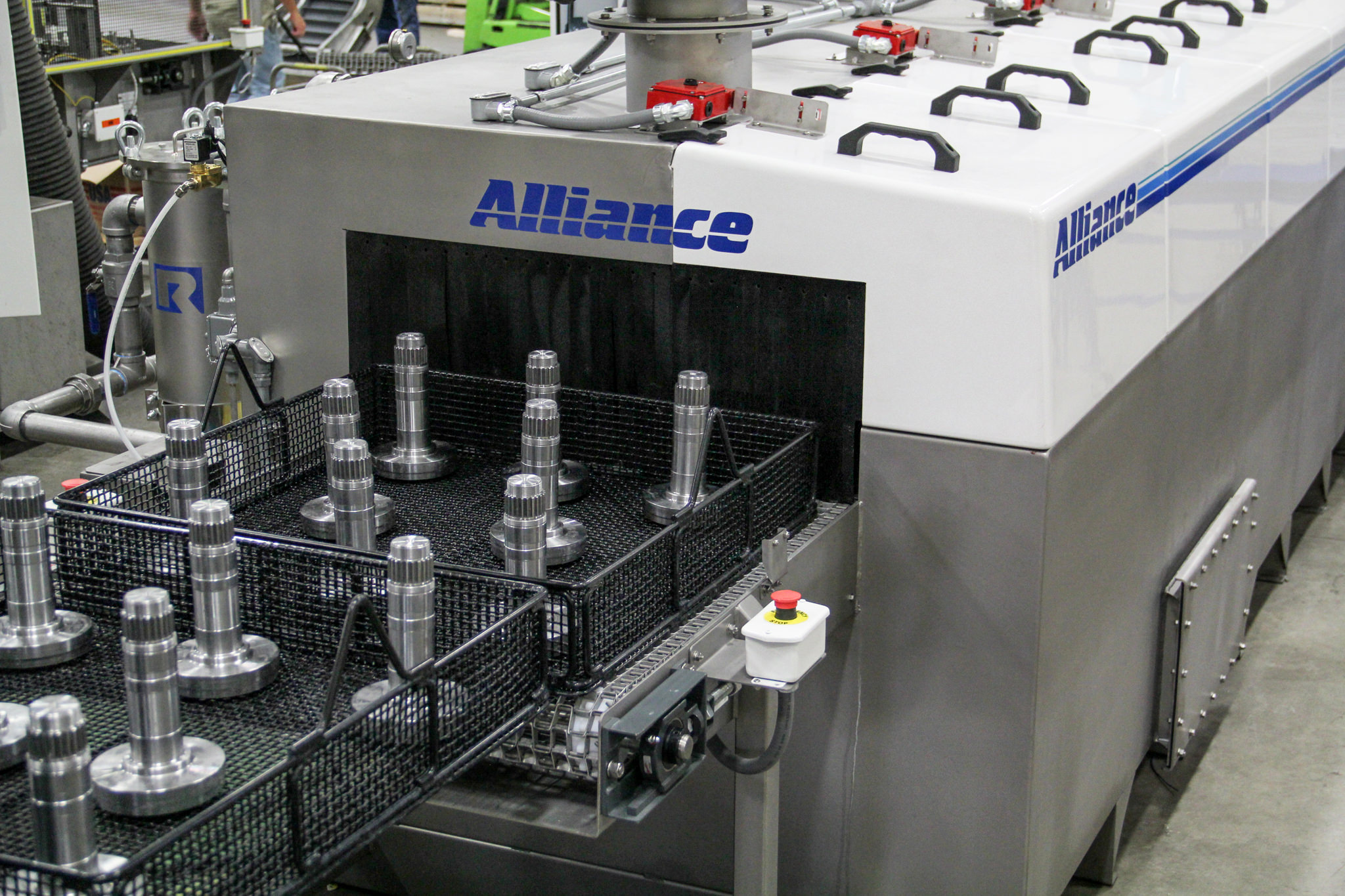
Understanding Spray Parts Washers
Spray parts washers are innovative cleaning systems designed to remove contaminants from various parts and components. These machines utilize a high-pressure cleaning solution spray, typically a combination of water and detergent, to effectively clean surfaces. The basic working principle involves directing the spray onto the parts, dislodging and rinsing away dirt, grease, oil, and other residues. The force of the spray and the chemical properties of the cleaning solution work together to break down and remove contaminants, leaving the parts clean and ready for further use or processing.
Different Types of Spray Parts Washers Available in the Market
There are several types of spray parts washers available in the market, each designed to cater to specific cleaning needs:
Cabinet Style Washers
This type of washer includes an enclosed cabinet or chamber where parts are loaded for cleaning. They can be manual or automated and are suitable for various part sizes and volumes.
Here at Alliance Manufacturing, we offer three different styles of cabinet washers. Our rotary front load cabinet washers, also known as the Aquamate RF. Our rotary top load cabinet washers, also known as the Aquamate RT. And lastly, our stationary fixture cabinet washers, also known as the Aquamate SF.
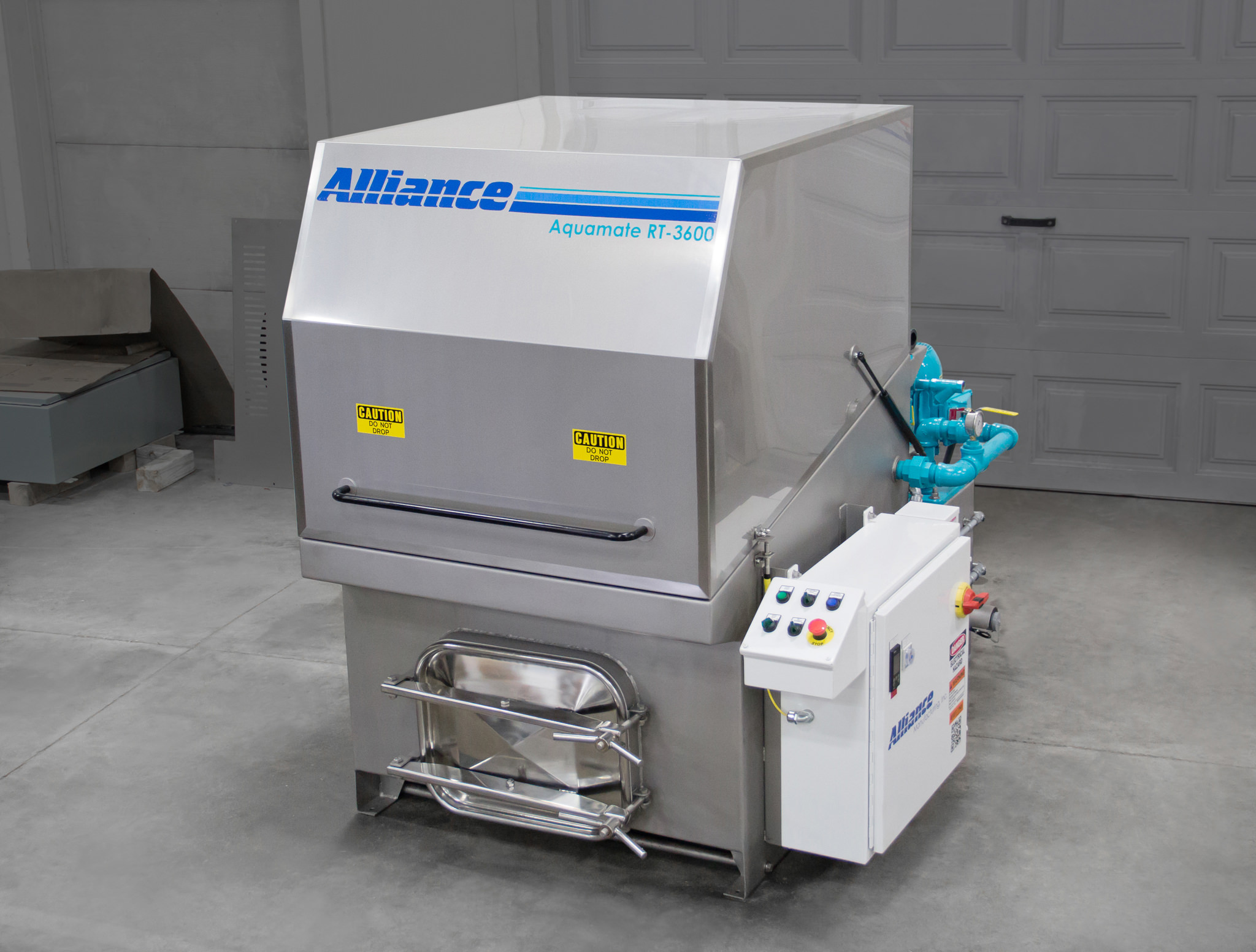
Conveyor Belt Washers
In this type of washer, parts are placed on a conveyor belt that moves them through the cleaning process. Conveyor belt washers are ideal for continuously cleaning large quantities of parts.
Here at Alliance Manufacturing, we offer six different types of conveyor parts washers. These include, Conveyor Belt Parts Washers (Aquamaster CB), Conveyor Chain Parts Washers (Aquamaster CC), Conveyor Monorail Parts Washers (Aquamaster CM), Conveyor Drum Parts Washers (Aquamaster CD), Conveyor Indexing Parts Washers (Aquamaster CI), and lastly a Conveyor Dip Parts Washers (Aquamaster DP).
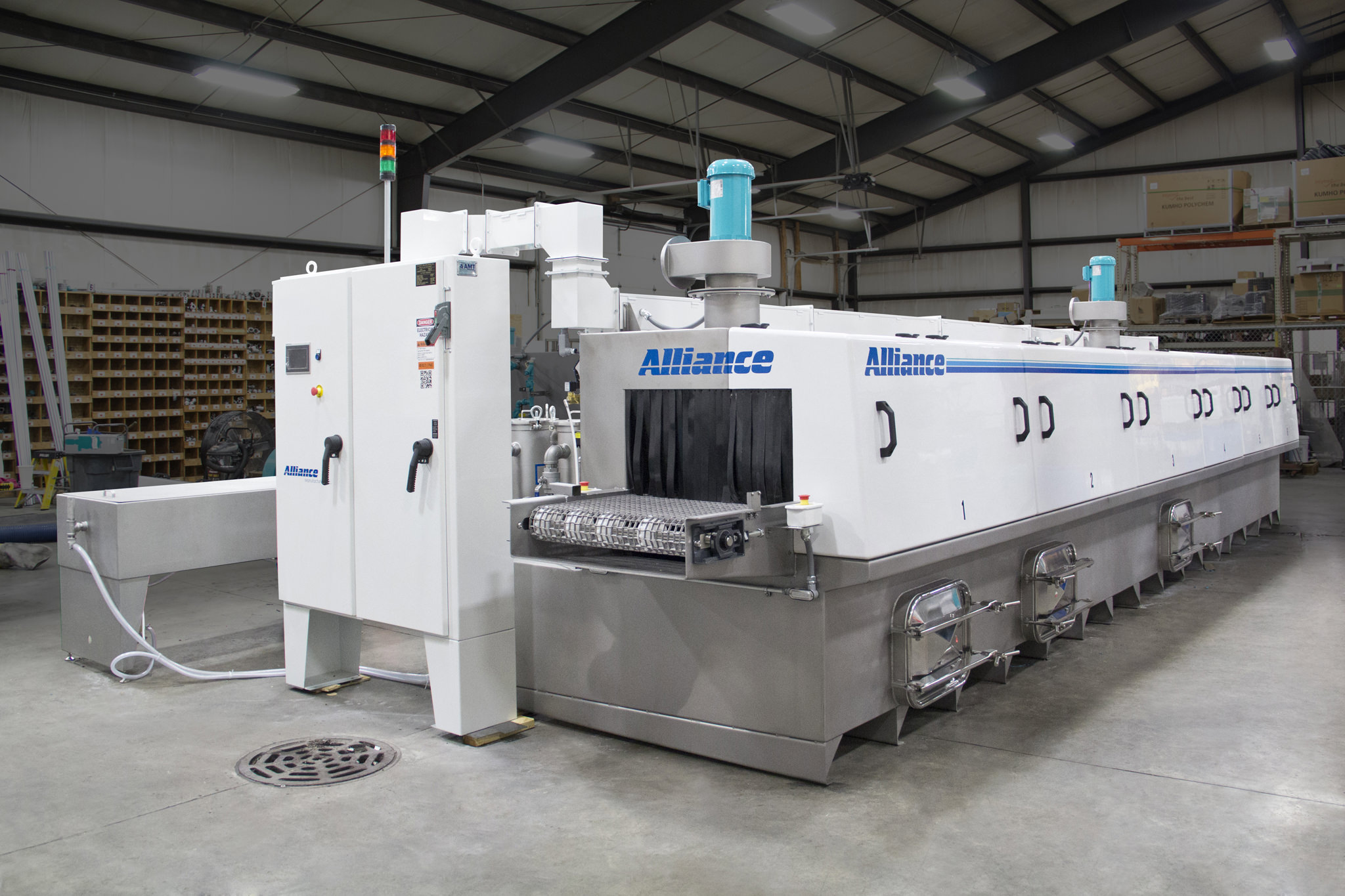
Rotary Drum Washers
These washers consist of a rotating drum where parts are loaded for cleaning. As the drum rotates, the parts are subjected to the spray, ensuring a thorough cleaning.
Here at Alliance Manufacturing, we offer one type of rotary drum washer, our rotary indexing parts washers or better known as the Aquamaster RI.
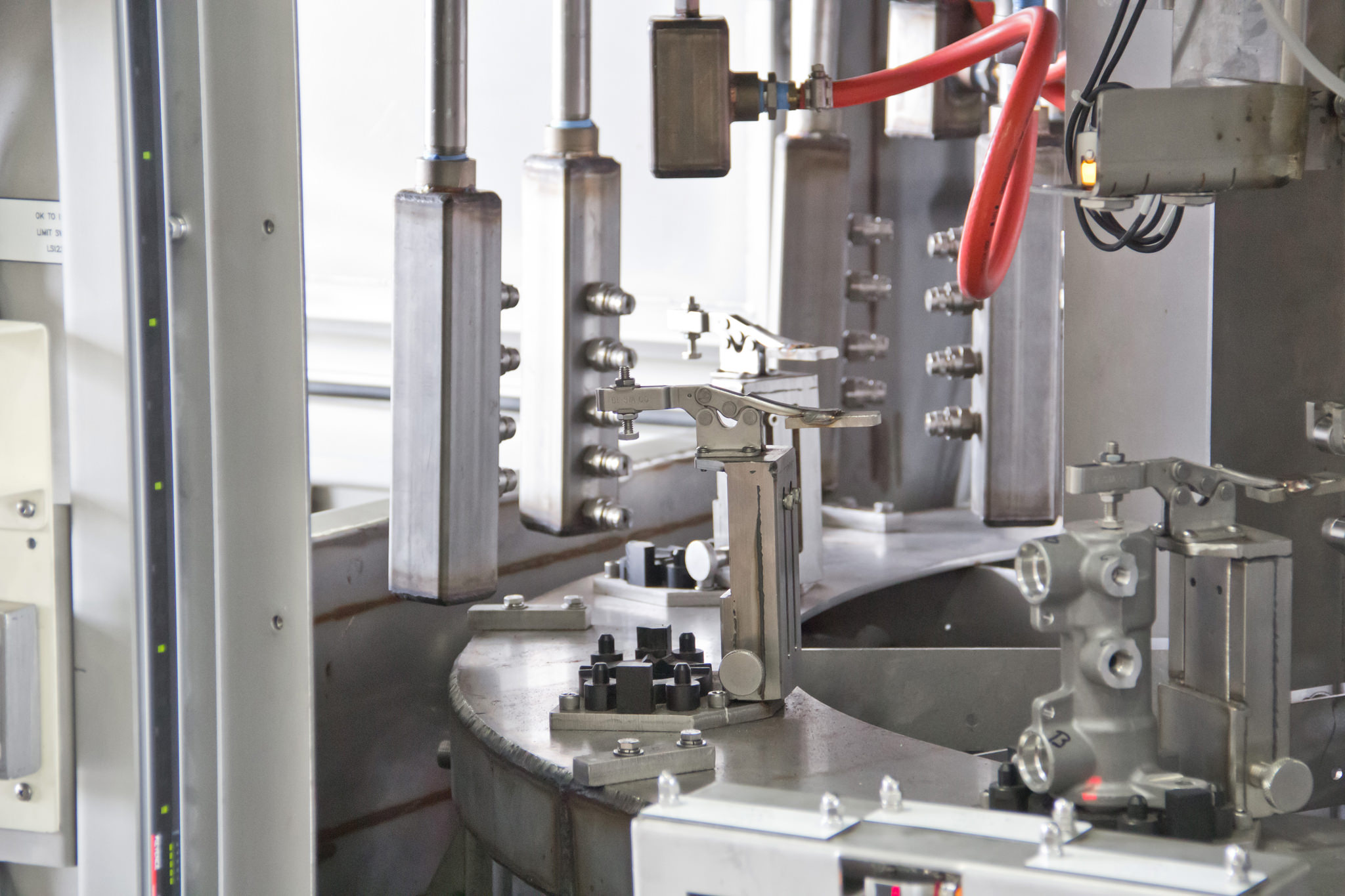
Immersion Spray Washers
Immersion spray washers combine the action of immersion tanks and spray washers. Parts are immersed in a tank containing the cleaning solution, and then high-pressure jets spray the solution onto the immersed parts for enhanced cleaning.
Although uncommon, Alliance Manufacturing offers one type of immersion spray washer, the 913 Jagemann Stamping Co, (CB-900DP).
Overview of Components and Features of a Typical Spray Parts Washer
A typical spray parts washer consists of the following components and features:
Spray Nozzles
These are the key elements that deliver the high-pressure spray onto the parts. They are strategically positioned to ensure thorough coverage and effective cleaning.
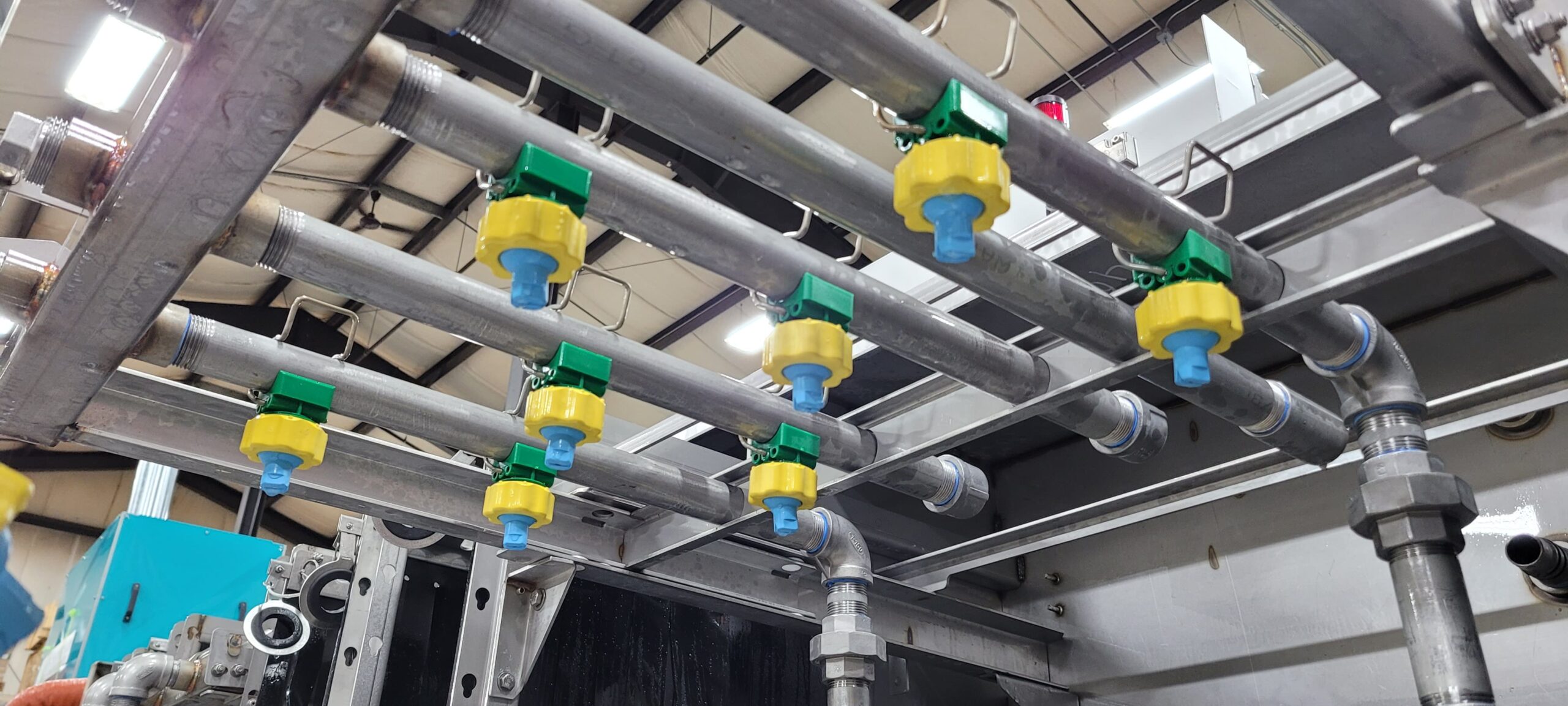
Pump System
The pump system generates the necessary pressure to deliver the spray. It is responsible for creating the force required to dislodge contaminants from the parts.
Cleaning Solution Tanks
These tanks hold the cleaning solution, which is a mixture of water and detergent. The solution is pumped from these tanks to the spray nozzles for application.
Filtration System
Many spray parts washers include a filtration system to remove debris and contaminants from the cleaning solution. This helps maintain the solution’s effectiveness and prolong its usage.
Control Panel
The control panel allows operators to set and adjust various parameters such as spray pressure, temperature, and cycle time. It also provides monitoring and safety features for efficient and safe operation.
Understanding the basic working principle, different types, and key components of spray parts washers provides a foundation for comprehending their capabilities and selecting the most suitable option for specific cleaning requirements. These machines offer versatility, efficiency, and advanced features that streamline the parts cleaning process, ultimately improving productivity and maintaining high cleanliness standards.
Advantages of Spray Parts Washers
Spray parts washers offer various advantages over other traditional parts cleaning methods, those advantages include:
Increased Cleaning Efficiency and Effectiveness Compared to Traditional Methods
Spray parts washers offer superior cleaning efficiency and effectiveness compared to traditional methods. The high-pressure spray and focused application of cleaning solution ensure thorough coverage and removal of contaminants, even in intricate part geometries and hard-to-reach areas. This leads to clean parts consistently and eliminates the need for manual scrubbing or repeated cleaning attempts.
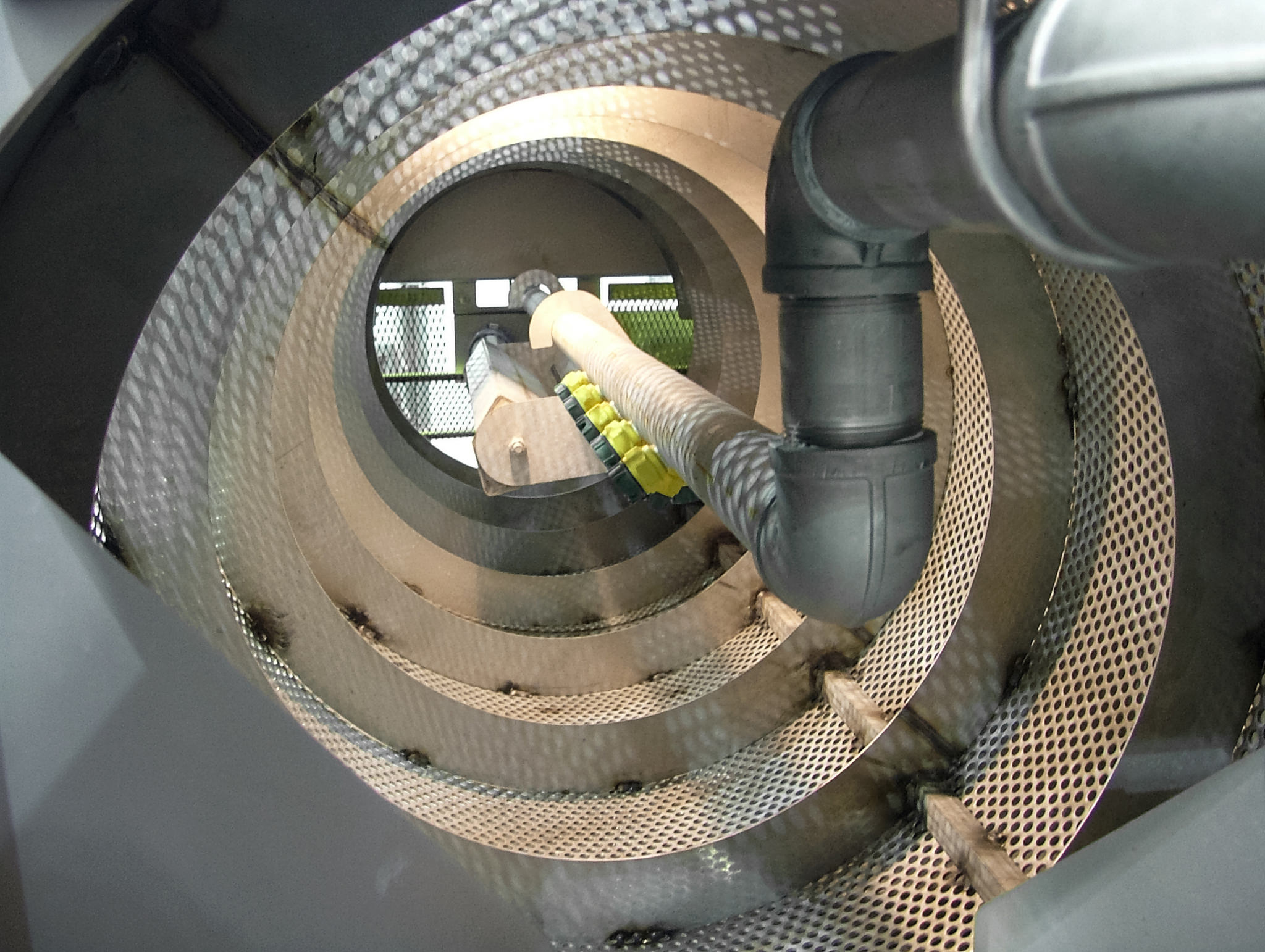
Time and Labor Savings Due to Automated Cleaning Processes
One of the significant advantages of spray parts washers is their automated cleaning processes. By eliminating the need for manual labor, these machines save valuable time and reduce labor costs. Operators can load the parts into the washer, set the desired parameters, and let the machine handle cleaning. This automation allows workers to focus on other tasks, leading to increased productivity and efficient utilization of resources.
Environmental Benefits Through Reduced Chemical and Water Usage
Spray parts washers also contribute to environmental sustainability by reducing chemical and water usage. Their precise spray application targets the contaminants directly, minimizing the need for excessive cleaning agents. This reduces chemical consumption and associated costs and minimizes the release of harmful substances into the environment. Furthermore, spray parts washers often incorporate filtration systems that help extend the lifespan of the cleaning solution, reducing waste generation and promoting responsible water usage.
Enhanced Safety for Workers by Minimizing Exposure to Hazardous Substances
Traditional parts cleaning methods, such as manual scrubbing or immersion baths, often involve harsh chemicals that pose health risks to workers. Spray parts washers minimize worker exposure to hazardous substances by containing the cleaning process within an enclosed chamber or cabinet. This reduces the inhalation and skin contact risks associated with the direct handling of cleaning agents. Some spray parts washers also feature safety features and protocols that further enhance worker protection.
Applications of Spray Parts Washers
As a result of these advantages, spray parts washers find extensive applications across various industries where specific parts cleaning is crucial. Some notable applications include:
Automotive Industry
Spray parts washers play a vital role in the automotive sector by effectively cleaning engine components, transmissions, and brake parts. These washers remove oil, grease, carbon deposits, and other contaminants that accumulate during vehicle operation. By ensuring clean parts, spray parts washers contribute to automotive components’ performance, reliability, and longevity.
Manufacturing Sector
In the manufacturing industry, spray parts washers remove oil, grease, and contaminants from various machine parts. From gears and bearings to molds and dies, these washers enable efficient and precise cleaning, ensuring optimal functioning of machinery and preventing contamination-related issues during manufacturing.
Aerospace Industry
Spray parts washers are instrumental in the aerospace industry for cleaning critical aircraft components. Landing gear, engine parts, and other aircraft systems require meticulous cleaning to maintain safety, reliability, and performance. Spray parts washers effectively remove dirt, hydraulic fluids, carbon deposits, and other contaminants from these components, ensuring compliance with rigorous aviation standards.
Medical and Pharmaceutical Sectors
The medical and pharmaceutical industries also require stringent cleanliness standards for precision instruments, tools, and equipment. Spray parts washers provide an effective solution for ensuring the cleanliness of these sensitive components. They remove contaminants such as biofilms, residues, and contaminants, ensuring the sterility and reliability of medical instruments and equipment used in surgical procedures, research laboratories, and pharmaceutical production facilities.
These are just a few examples of the diverse applications of spray parts washers. These versatile cleaning systems are employed in numerous other industries, including electronics manufacturing, food processing, metalworking, etc. The ability of spray parts washers to deliver thorough and consistent cleaning makes them an invaluable asset in industries where precision, reliability, and cleanliness are paramount.
Considerations When Choosing a Spray Parts Washer
When selecting a spray parts washer for your specific needs, several crucial factors should be taken into consideration such as:
Cleaning Requirements and Compatibility with Different Parts and Materials
Different parts and materials have unique cleaning requirements. It is essential to assess the types of contaminants you need to remove and ensure that the spray parts washer is compatible with those parts and materials. Consider factors such as the spray pressure, temperature control, and the ability to adjust cleaning parameters to meet your specific cleaning needs.
Size and Capacity Considerations based on the Volume and Size of Parts to be Cleaned
The size and capacity of the spray parts washer are also critical considerations. Evaluate the size and volume of the parts you need to clean and ensure that the machine’s dimensions and capacity can accommodate them effectively. Consider factors such as the internal dimensions of the cleaning chamber, load weight capacity, and the number of parts that can be cleaned in a single cycle.
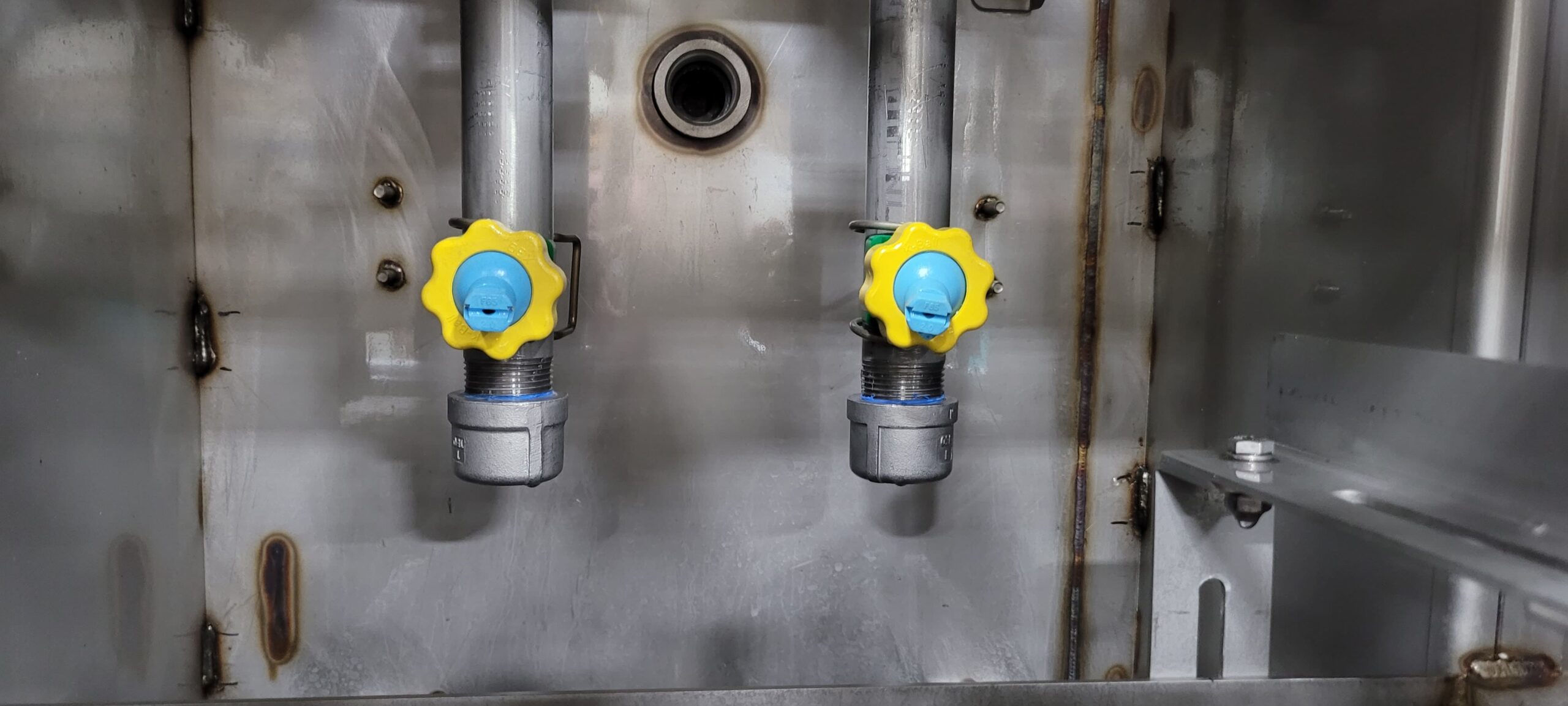
Energy Efficiency and Water Conservation Features
Furthermore, efficiency in energy usage and water conservation is essential for sustainability and cost-effectiveness. Look for spray parts washers with energy-saving features such as programmable timers, automatic shut-off, and insulation to minimize heat loss. Additionally, consider machines with water recycling systems, filtration mechanisms, or low-water consumption features to reduce water usage and promote responsible resource management.
Maintenance and Service Requirements
Regular maintenance and servicing are crucial for a spray parts washer’s optimal performance and longevity. Consider the maintenance requirements of the machine, including cleaning, filter replacement, and preventive maintenance schedules. Assess the availability of spare parts and the level of customer support provided by the manufacturer or supplier. Additionally, evaluate the ease of accessing and cleaning the spray nozzles, filters, and other components to ensure efficient upkeep.
Tips for Effective Use of Spray Parts Washers
To maximize the effectiveness and efficiency of your spray parts washer, consider the following tips:
Proper Loading and Arrangement of Parts for Optimal Cleaning
To begin with, ensure that parts are loaded into the spray parts washer in a way that allows for thorough cleaning. Arrange them in a manner that ensures adequate exposure to the spray, paying attention to any intricate geometries or hard-to-reach areas. Avoid overcrowding the cleaning chamber, as it may hinder the spray’s ability to reach all surfaces of the parts. Use appropriate fixtures or racks to hold parts and promote optimal spray coverage securely.
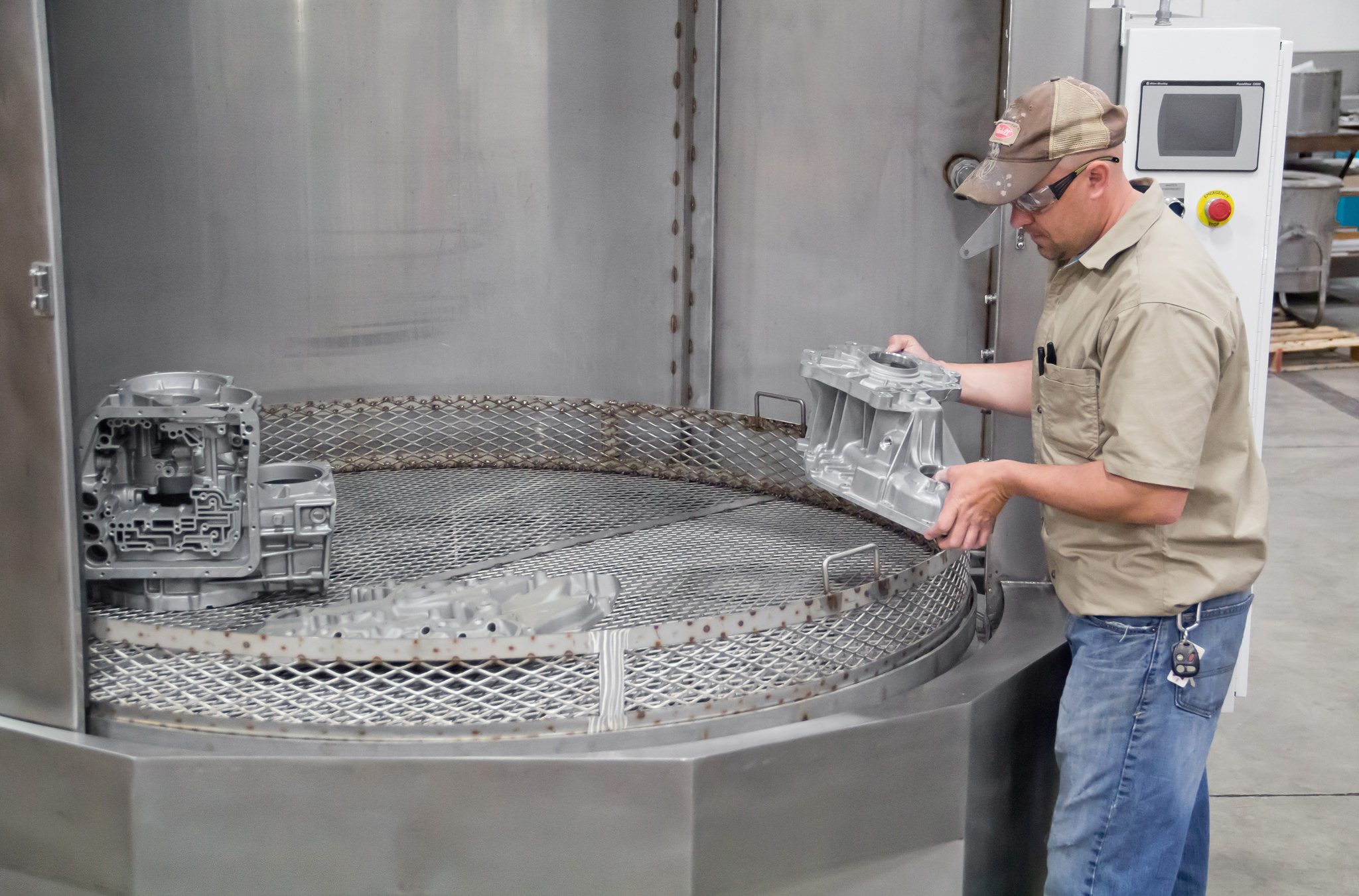
Selection of Appropriate Cleaning Agents and Detergents
Additionally, choose the right cleaning agents and detergents compatible with the contaminants and materials you are dealing with. Consult with the spray parts washer manufacturer or supplier to ensure you select the most suitable cleaning solution. Follow the recommended dilution ratios and usage guidelines for the cleaning agents to achieve optimal cleaning results without causing damage to the parts or the machine.
Regular Maintenance and Cleaning of the Spray Parts Washer
Furthermore, adhere to a regular maintenance schedule to keep the spray parts washer in optimal working condition. Clean and inspect the spray nozzles, filters, and other components as the manufacturer recommends. Replace worn-out or damaged parts promptly to maintain efficient operation. Regularly clean the machine’s interior to remove any residue or buildup affecting its performance. By staying proactive with maintenance, you can prevent issues, prolong the machine’s lifespan, and ensure consistent cleaning results.
Ensuring Operator Training and Safety Protocols are Followed
Finally, proper operator training is essential to ensure the safe and effective use of the spray parts washer. Train operators on the correct loading procedures, cleaning parameters, and safety protocols. Emphasize the importance of following all safety guidelines, including using personal protective equipment (PPE) such as gloves and safety goggles. Promote a culture of safety awareness and provide ongoing training to operators to keep them updated on best practices and any changes to operating procedures.
Conclusion
In conclusion, spray parts washers offer numerous benefits, such as increased cleaning efficiency, time and labor savings, environmental sustainability, and enhanced worker safety. It is highly encouraged for businesses in various industries to integrate spray parts washers into their cleaning processes to achieve higher cleanliness standards, improve productivity, and reduce costs. By embracing these advanced cleaning systems, businesses can enhance their operational efficiency and position themselves for success in a competitive market.